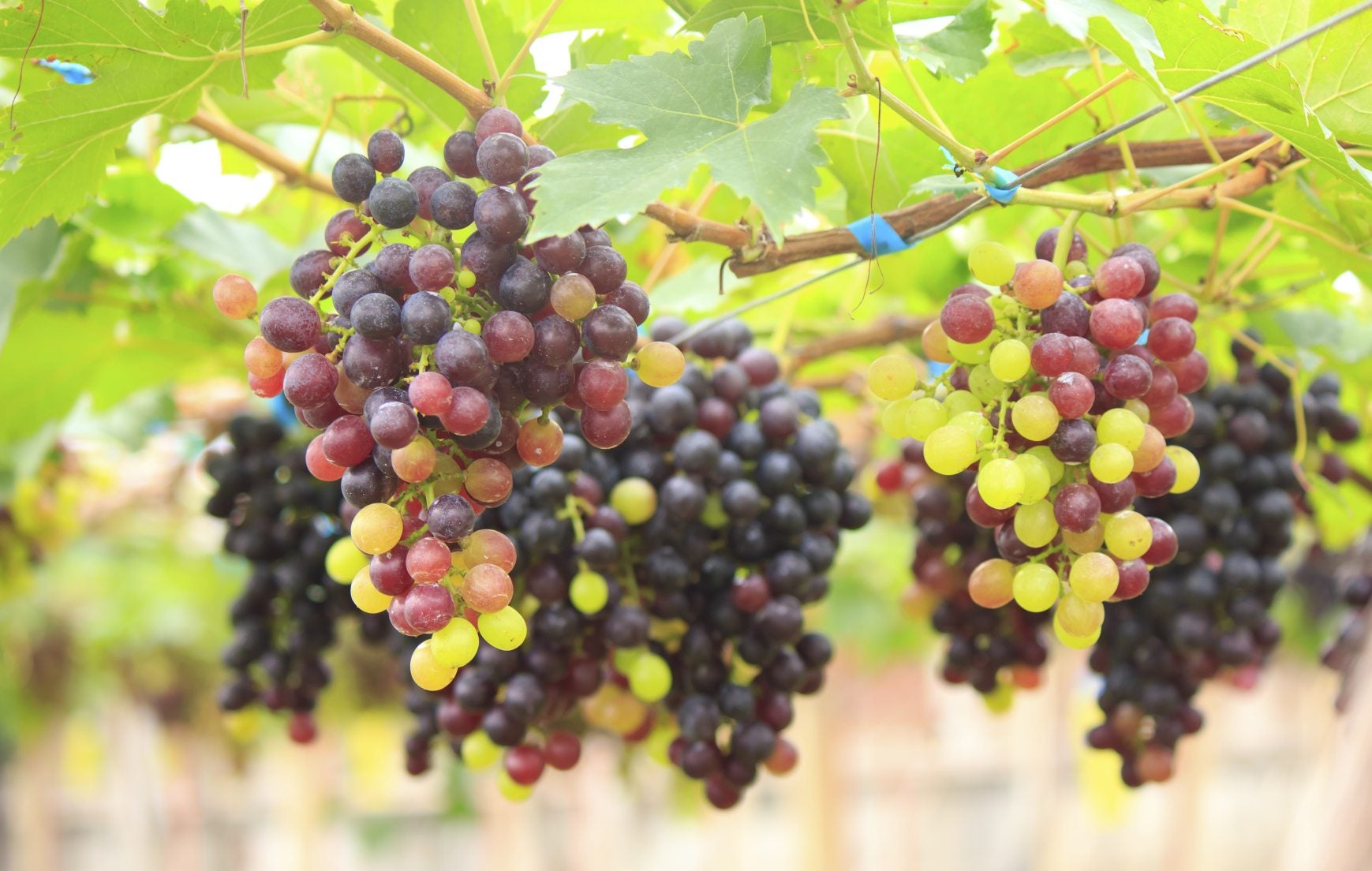What Are Seedless Grapes – Different Types Of Seedless Grapes


Seedless grapes are rich in flavorful juiciness without the bother of pesky seeds. Most consumers and gardeners may not give a lot of thought to seedless grapes facts, but when you stop to think about it, exactly what are seedless grapes and without seeds, how does a seedless grape reproduce? Read on for answers to those questions, and more.
What are Seedless Grapes?
If you’re concerned that seedless grapes are the result of some sort of genetic modification or weird scientific wizardry, you can relax. The first seedless grapes actually came about as a result of a natural (not laboratory produced) mutation. Grape growers who noticed this interesting development got busy and grew more seedless grapes by planting cuttings from those vines. How does a seedless grape reproduce? The seedless grapes you see in the supermarket are propagated the same way – through cuttings that produce clones of an existing, seedless grape variety. Most fruits, including cherries, apples, and blueberries, are produced in this manner. (Citrus fruits are still propagated the old-fashioned way – by seed.) Often, seedless grapes have tiny, unusable seeds.
Seedless Grape Varieties
There are many different types of seedless grapes, with seedless grape varieties available to home gardeners in nearly every climate across the country. Here are just a few: ‘Somerset’ tolerates chilly temperatures as far north as USDA plant hardiness zone 4. This heavy-bearing vine produces sweet grapes with an unusual flavor that is reminiscent of strawberries. ‘Saint Theresa’ is another hardy seedless grape suitable for growing in zones 4 through 9. This vigorous vine, which produces attractive purple grapes, grows well on a screen or arbor. ‘Neptune,’ suitable for zones 5 through 8, produces large, juicy, pale green grapes on showy vines. This disease-resistant variety ripens in early September. ‘Joy’ is a blue grape that tolerates rainy weather better than many varieties. Joy is ready to harvest relatively early, ripening in mid-August. ‘Himrod’ produces clusters of sweet, juicy, golden grapes that ripen in mid-August. This variety performs well in zones 5 through 8. ‘Canadice’ produces compact clusters of sweet, firm, dazzling, red grapes from mid-August through September. This mild flavored variety is suitable for zones 5 through 9. ‘Faith’ is a reliable producer for zones 6 through 8. The attractive blue, mellow fruit typically ripens very early – in late July and early August. ‘Venus’ is a vigorous vine that produces large, blue-black grapes. This hardy vine prefers zones 6 through 10. ‘Thomcord’ is a cross between familiar Concord and Thompson grapes. This heat-tolerant vine produces fruit with the richness of Concord and the mild, sweet flavor of Thompson. ‘Flame,’ a good choice for warmer climates, this grape variety thrives in zones 7 through 10. The sweet, juicy fruit ripens in August.
Sign up for the Gardening Know How newsletter today and receive a free copy of our e-book "How to Grow Delicious Tomatoes".

A Credentialed Garden Writer, Mary H. Dyer was with Gardening Know How in the very beginning, publishing articles as early as 2007.